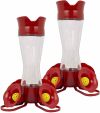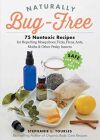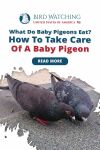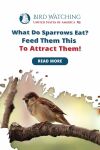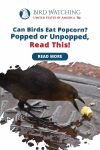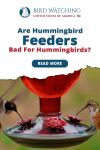
What’s This Post About?
Hummingbirds are one of the most captivating creatures, and you might want to skip a few things just to look at them for their beauty. Many people these days have started to feed hummingbirds with hummingbird feeders.
However, a lot of them are confused if the feeders are harming them. Several searches are asking if hummingbird feeders are bad for hummingbirds. However, the answer that we found to this question says otherwise.
No, hummingbird feeders do not harm hummingbirds and are not bad for them if they are well maintained. The things that can harm hummingbirds include dirty feeders, red food coloring, improper nectar recipes, and invasion of bees and ants inside the feeder. Luckily, you can control these factors easily.
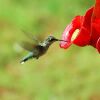
What do Hummingbirds Eat?
Hummingbirds are the kind of birds that consume most soft-bodied insects like small spiders, tiny food flies that are found on rotten fruits, aphids, and gnats. Other than insects, they mainly feed on nectar, mostly sucrose that comes out from flowers.
If you’re planning to put a hummingbird feeder, you must ensure that you provide sufficient nectar to them to satisfy the sucrose part of their diet. It gets very difficult for them when there is a shortage of flowers in the nearby area or a lack of nectar supply.
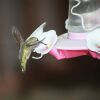
What Food do we Serve in the Feeder?
Have you wondered what could be the food you’re going to serve in the feeder? Well, you have to prepare a sugar-water solution as the feeder food. However, if the given recipe is not followed properly, it might harm hummingbirds greatly.
There is a certain recipe that helps you to prepare the feeder food. The first thing that you will add to the recipe is one part of white sugar. Make sure that you do not boil the sugar. The next thing that you are adding is four parts of boiled water. Do not forget to remeasure it after boiling.
The ratio used in this recipe mirrors the sugar to water ratio present in nectar that hummingbirds prefer. Adding too much sugar can affect their kidney and liver. However, too little sugar will leave them with insufficient calories.
Warning
Don't experiment with the feeders!
Do keep in mind that you must not use red dye, commercial hummingbird food, artificial sweeteners, and anything other than the ratio described above, which is always 1:4. Moreover, you must not serve them organic sugar, which is not as pure as white table sugar.
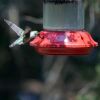
What is the Best Type of Hummingbird Feeder?
The best type of Hummingbird feeder is the one that is easy to maintain, fill, hang, and clean. A glass bottle that will thread into a plastic basin can work well as a hummingbird feeder.
Another type of Hummingbird feeder is a shallow plastic basin having a lid with feeding ports snapping down over it. Both of these types can be easily cleaned, which is the most important specification.
Since I have a lot of experience with birds, you can trust me when I recommend this awesome hummingbird feeder. It helps keep the insects away and also lets my tiny feathery friends get their food.
Pro-Tip
Choose a hummingbird feeder which has a wide mouth making it easier for you to clean and brush it from the inside and prevent any mold and bacterial growth.
How to Maintain a Safe Environment Inside the Hummingbird Feeder?
Once you start attracting several hummingbirds to your backyard, you must also take care of their safety. There are several ways to protect them from getting harmed.
To protect them from all the dangers, you must make sure that you limit the use of pesticides, prevent them from predators, change the nectar regularly, and maintain a cleaning routine.
1. Limit the Use of Pesticides
Just like every other creature, your tiny little hummingbirds can also get harmed upon ingesting or absorbing pesticides. Various birds get killed by the consumption of pesticides in the US each year, and many of them suffer due to reduced breeding success.
Are you confused between protecting your plants or hummingbirds? Well, you don’t have to quit using pesticides. You can prevent hummingbirds by just avoiding spraying pesticides around the hummingbird feeder.
Another thing you could do is not to spray on the flowers around in that area, on which hummingbirds can land on for additional nectar. Using non-chemical methods for fighting pests can also help. Naturally Bug-Free can be used as a great alternative to your traditional pesticide.
Naturally Bug-Free: 75 Nontoxic Recipe Book
This is by far the best book on Nontoxic rcipies for repelling insects. Worth every penny! And all the recipes are natural, which is a must for me!
2. Prevent from Predators
Hummingbirds are very vulnerable to their predators. Most cats, preying birds, and any fast animal that can catch them from the sky can be a threat.
This is why you must always place your Hummingbird feeder at a high location. Think about placing it near some tree or around some bush to cover the area. If you place your feeder under 15 feet of shelter, it gets easier for a hummingbird to escape it, upon sensing danger.
Pro-Tip
If you want to protect the hummingbird from dogs and cats, you must place the feeder at least 4 to 6 feet above the ground.
3. Change the Nectar Regularly
It does not matter if the feed is a store-bought solution or your homemade 1:4 sugar solution, it can quickly go bad if it is too hot outside. Similarly, if a solution is left out for a longer duration, even in mild weather, it will get spoilt.
Hence you must schedule your nectar changing duration according to the weather. In mild weather, you must change the nectar supply every week. However, in hot weather, you must change it every two days.
4. Prevents Collisions with Windows
We all know hummingbirds fly very fast, but have you ever imagined them colliding with your window at the same speed? Well, that sometimes ends up being fatal for them. This usually happens because they mistake a window with an open sky.
You can protect these birds from this collision by placing the feeder at least 15 to 20 feet away from the windows. This will reduce their exposure to the window route. Other than that, you can also apply window coverings that will reduce reflection, to alert them.
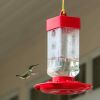
5. Schedule the Cleaning Routine
This should be an important part of the routine as you must prevent your hummingbird feeder from catching mold and bacteria. Once the feeder catches bacteria or some fungus, it gets difficult to destroy them.
This bacterial and fungal growth can be a threat to hummingbirds. In hot weather, nectar ferments quickly, resulting in the fast growth of mold and bacteria. Hence, you must make sure that you clean it more often if the weather is hot.
Moreover, you must make sure that you fill your feeders halfway so that you don’t have to clean them every day but every second day.
Pro-Tip
Keep the feeder under the shade so that the sugar doesn't get spoilt quickly.
How Does Red Food Coloring Harm Hummingbirds?
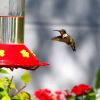
You must have read multiple times that red food coloring can be very harmful to hummingbirds. It is strictly prohibited to add red food coloring to your feeder food recipe. There is no explanation for this prohibition.
However, the red dye number 2, known as amaranth, was banned in 1976 and was replaced by red dye number 40. There’s no scientific proof that red dyes are bad for hummingbirds. Nevertheless, your hummingbirds do not need the red color.
Keep Reading!
I want to emphasize that there is no need to worry about your beloved hummingbirds as feeders aren’t bad for them. However, you must take care of other factors to ensure the tiny birds stay healthy.
We value your concern towards the hummingbirds’ health and diet, and we hope that this post was useful enough for you to find out your answer.
If you love hummingbirds just like we do and wish to find out more about them, I know just the post that you could read. Head over to learn everything you need to know about a hummingbird’s nest.
Everything About Hummingbird Nests - Impressive Facts to Know All in One Post
Have you been looking for everything on hummingbird nests? Well, we’ve got you covered. Here is a compilation of this bird’s nesting habits.

By David A. Swanson
Bird Watching USA
My name is David and I'm the the founder of Bird Watching USA! I started Bird Watching with My father-in-law many years ago, and I've become an addict to watching these beautiful creatures. I've learnt so much over about bird watching over the years that I want to share with the world everything I know about them!

David A. Swanson
Bird Watching USA
My name is David and I'm the the founder of Bird Watching USA! I started Bird Watching with My father-in-law many years ago, and I've become an addict to watching these beautiful creatures. I've learnt so much over about bird watching over the years that I want to share with the world everything I know about them!

